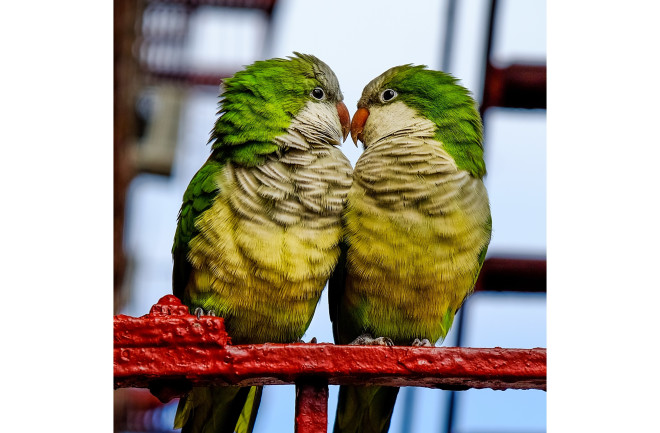Wildlife in New York City tends to be headline news. Whether it is the inspiring return of humpback whales to the Hudson River, the resiliency of peregrine falcons in skyscraper nests, or the shameless determination of pizza rat, it is these animals’ admirable ability to coexist with humans and their scarcity that draws our attention and our empathy. Yet, unbeknownst to even most New Yorkers, another animal has invaded the city with surprising results. Some call them Quaker parrots, while others know them as monk parakeets. Unlike the city’s pigeons and raccoons, these birds are a long way from home.
Monk parakeets originally come from the temperate and subtropical regions of Argentina, Brazil and Uruguay. They’re bowling pin-sized and shine a vibrant green, with a pale chest, crown and forehead that renders them nature’s incarnation of a punk-rock monk. In recent decades, their presence in New York has caused problems when their elaborate nests built on electrical equipment cause power outages. But there’s little risk of these intelligent and resourceful birds taking over the city. Utility companies deploy special teams to keep equipment bird free, and the parrots have become a largely welcomed addition to New York’s wildlife scene.

